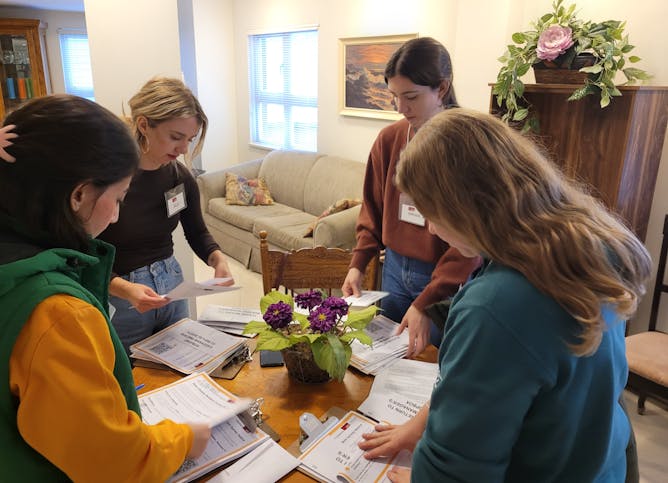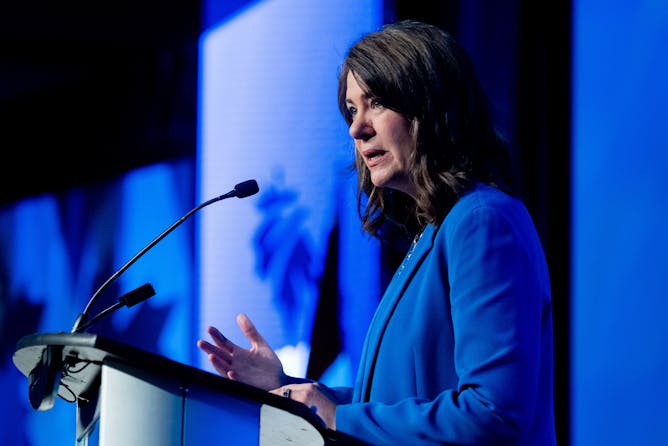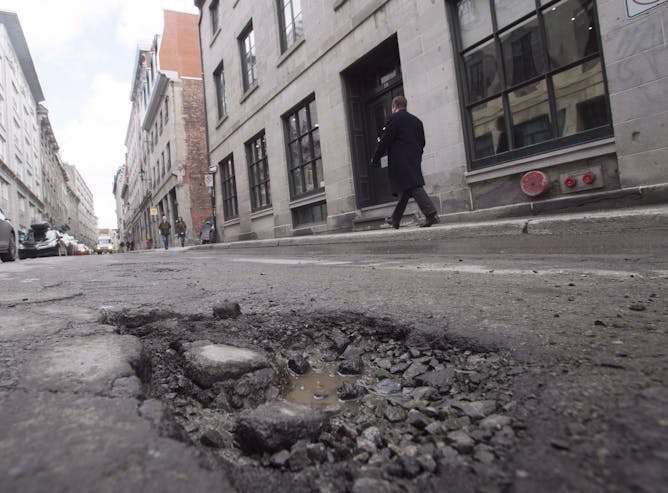|
|
|
|
Housing has once again emerged as a central focus of the Canadian government’s federal budget. Across the country, efforts to increase the supply of homes are at an all-time high, and yesterday’s budget includes $8.5 billion in new spending for housing.
A growing share of newly built homes in Canada are in high-density buildings. This, combined with record levels of immigration and urban growth, mean the demographic composition of neighbourhoods is rapidly shifting in the country.
Today in The Conversation Canada, Meg Holden and Yushu Zhu from Simon Fraser University write about their research on neighbouring within these high-density, socially diverse communities.
Holden and Zhu emphasize the importance of understanding neighbour dynamics in urban and neighborhood planning. They write: “For rapidly changing neighbourhoods, with high levels of diversity and vulnerability, neighbouring carries risks and constraints, but still matters.”
Also today:
|

|
Eleni Vlahiotis
Assistant Editor, Business + Economy
|
|

Simon Fraser University students compile survey packages for a community housing resident survey in North Vancouver in November 2023.
(Meg Holden)
Meg Holden, Simon Fraser University; Yushu Zhu, Simon Fraser University
Before we draw conclusions about the implications of social isolation, we should check our expectations of how, when and why neighbouring does or does not happen.
|

Parents of Chibok schoolgirls who were kidnapped in 2014 by Islamic extremists attend a 10th anniversary event of the abduction in Lagos, Nigeria, on April 4, 2024.
(AP Photo/Mansur Ibrahim )
Temitope Oriola, University of Alberta
It’s been 10 years since the #BringBackOurGirls campaign was launched to rescue kidnapped Nigerian schoolgirls. Looking back at the campaign reveals its innovations and limitations.
|

Within the first three seconds of opening a web page, over 80 third parties on average have accessed your information.
(Shutterstock)
Raymond A. Patterson, University of Calgary; Ashkan Eshghi, Warwick Business School, University of Warwick; Hooman Hidaji, University of Calgary; Ram Gopal, Warwick Business School, University of Warwick
Existing regulations do not go far enough in protecting people’s information from being collected and shared when they visit websites.
|

Supporters listen to Ekrem Imamoglu, Istanbul’s mayor and Republican People’s Party (CHP) candidate, outside city hall in Istanbul on April 1, 2024.
(AP Photo/Emrah Gurel)
Spyros A. Sofos, Simon Fraser University
Increased political power for Turkey’s secularist CHP is a problem for Recep Tayyip Erdoğan, who must now reignite the Turkish economy and stem the rising appeal of rival splinter Islamist parties.
|

Alberta Premier Danielle Smith delivers a speech prior to a fireside chat during a Canada Strong and Free Network event in Ottawa, on April 12, 2024. The Alberta Conservative party has long prioritized the interests of fossil fuels.
THE CANADIAN PRESS/Spencer Colby
Ian Urquhart, University of Alberta
A fossil fuel ideology transcends political lines and inhibits effective action on the green transition. Alberta is a clear example.
|
La Conversation Canada
|

Un nid-de-poule sur la rue Saint-Paul, à Montréal. Malgré les discussions récurrentes, les solutions durables peinent à s’imposer au Québec. Pourtant, il existe de nombreuses solutions pour construire des routes plus résistantes aux conditions météorologiques.
La Presse Canadienne/Ryan Remiorz
Eric Lachance-Tremblay, École de technologie supérieure (ÉTS)
Les nids-de-poule semblent une fatalité. Il existe pourtant des solutions pour construire des routes plus résistantes aux conditions météorologiques, notamment quant aux cycles de gel et de dégel.
|
Culture + Society
|
-
Adwoa Owusuaa Bobie, Kwame Nkrumah University of Science and Technology (KNUST)
West African designers produce only the clothes that are needed, preventing waste and allowing space for creativity.
|
|
Health
|
-
Colin Michie, University of Central Lancashire
B virus is a biosafety category 4 virus. That is, the same level as Ebola and unknown new pathogens.
|
|
Science + Tech
|
-
Jennifer Forestal, Loyola University Chicago
There is no shortage of horror stories about online shaming, but it’s not always a bad thing. It comes down to who is doing the shaming and how cohesive the online community is.
|
|
|
|
| |
| |
| |

|
| |
| |
| |
| |
| |
| |
|
|
|
|
|
|
|